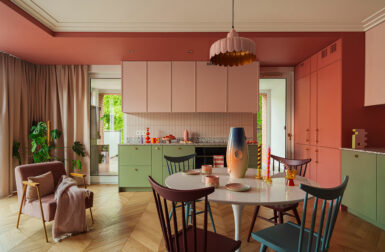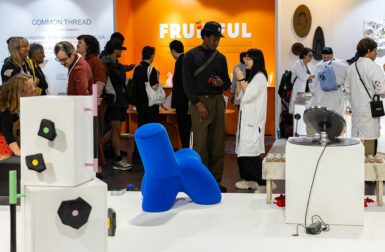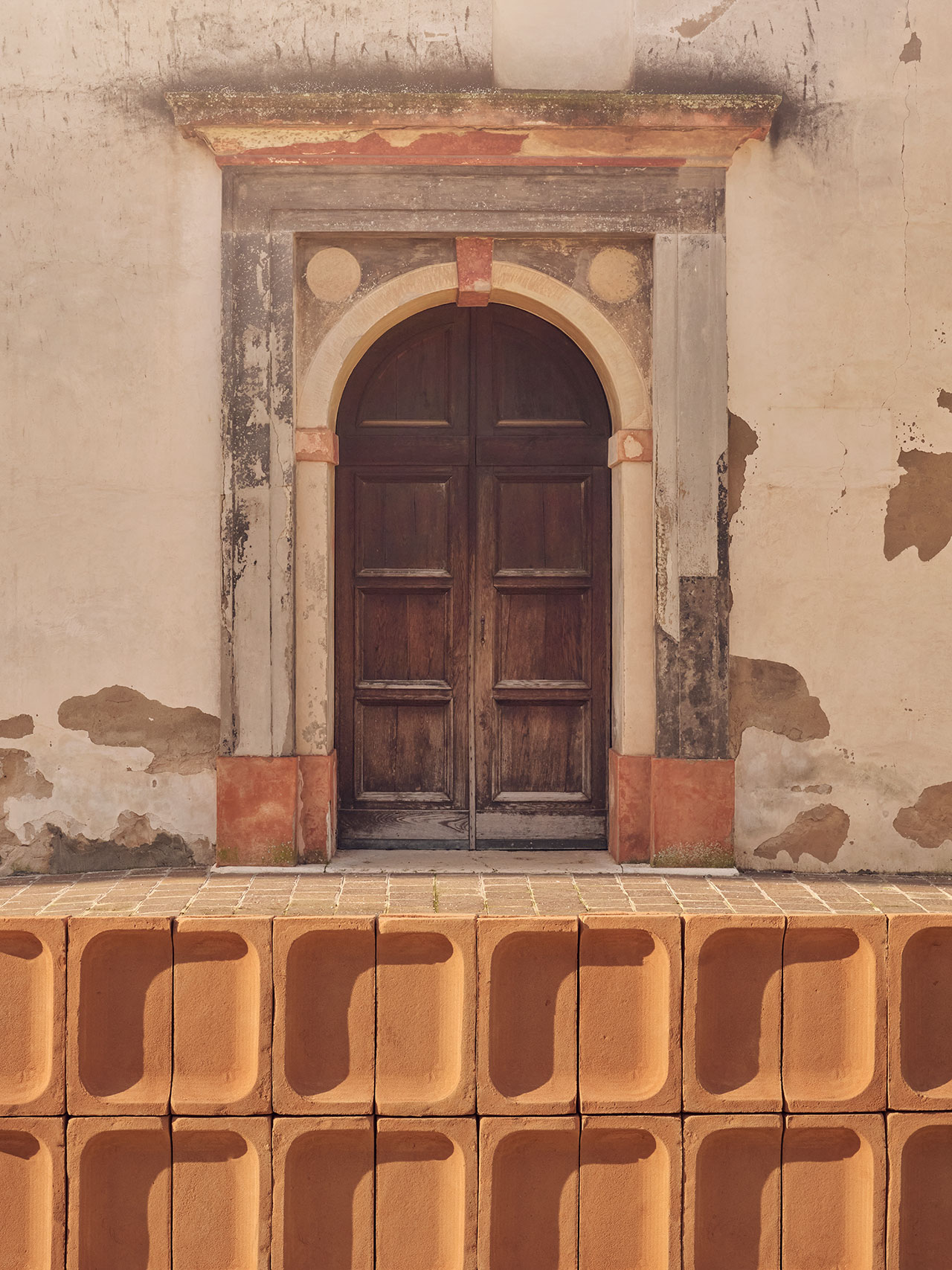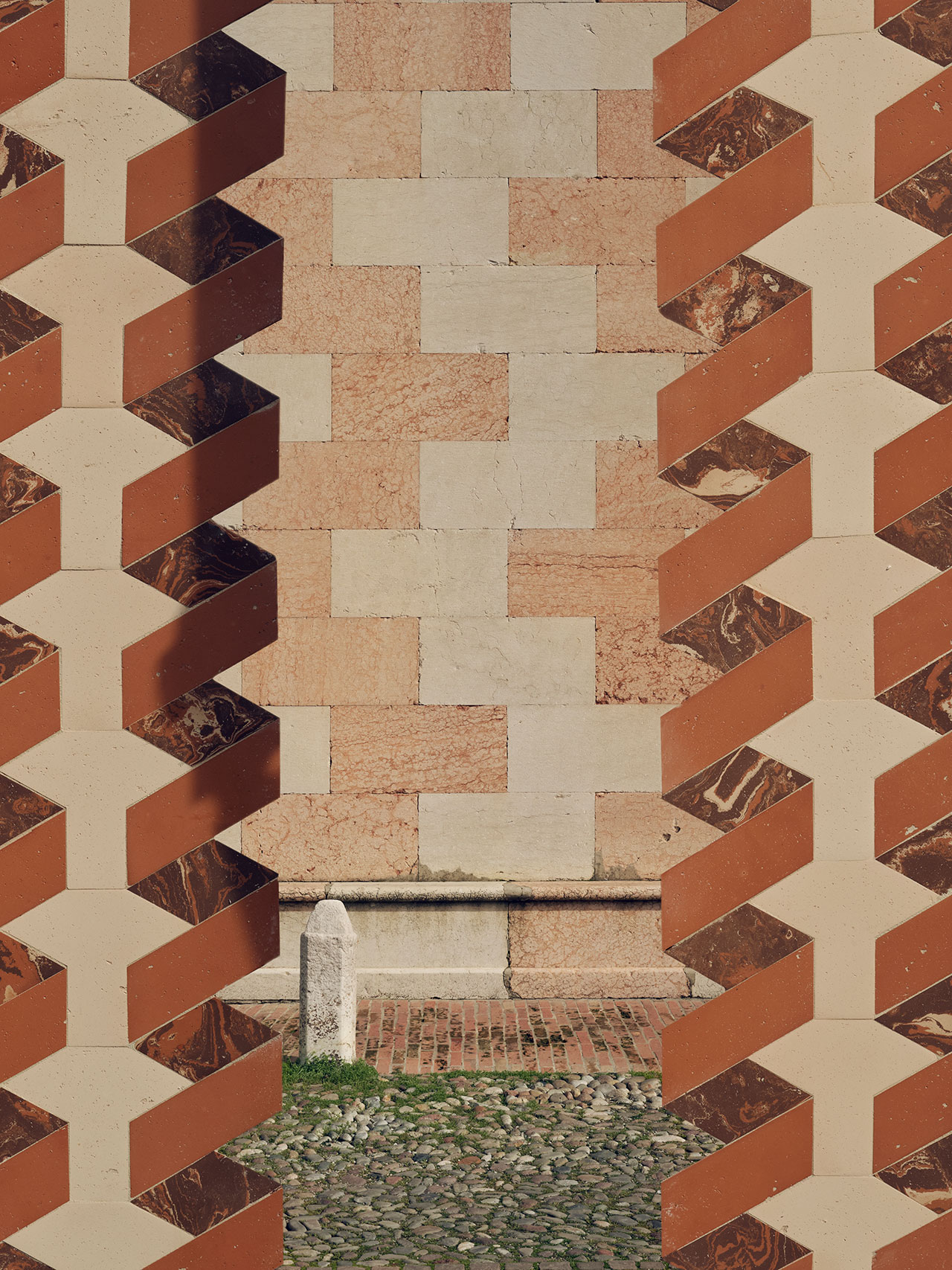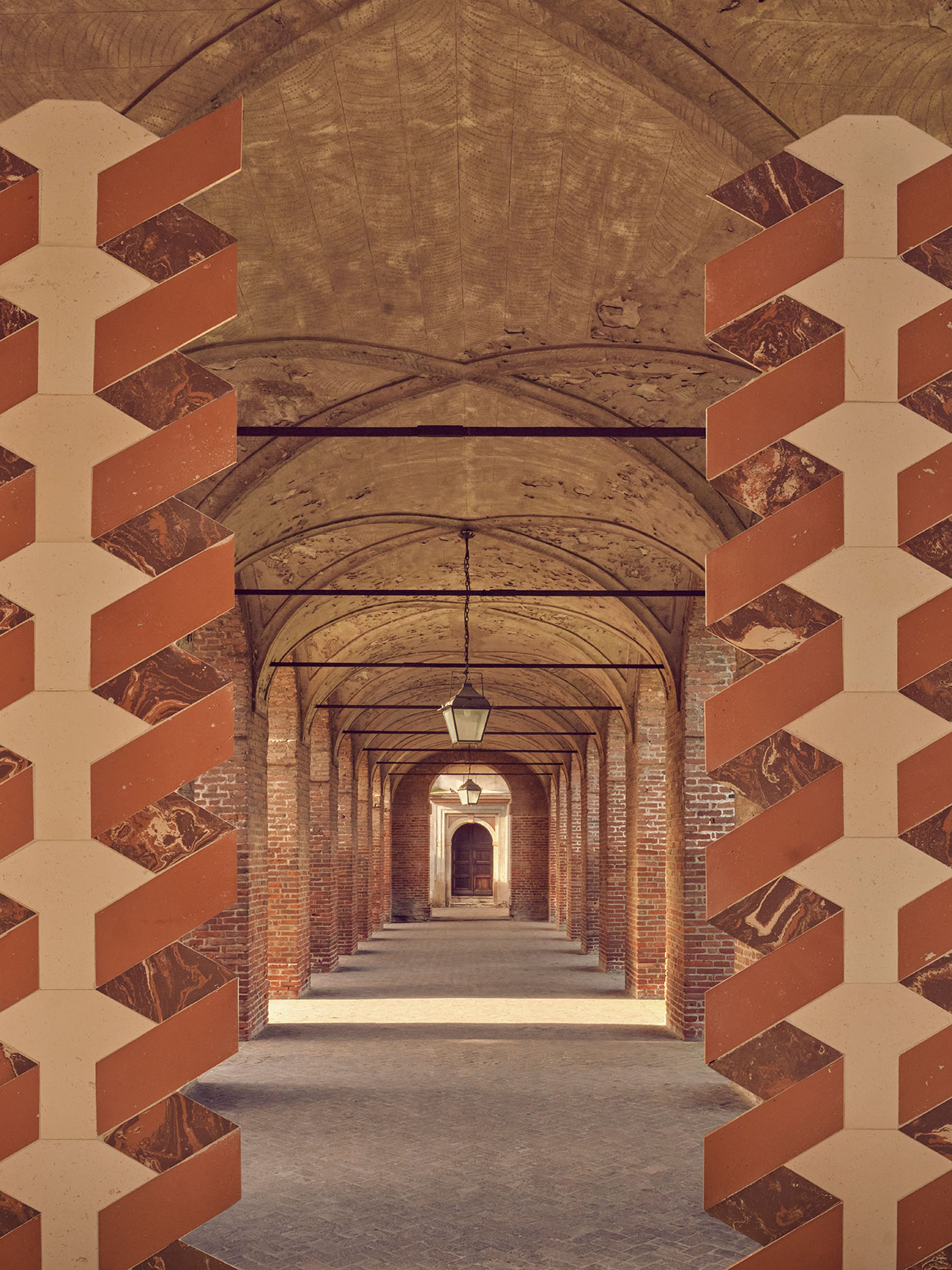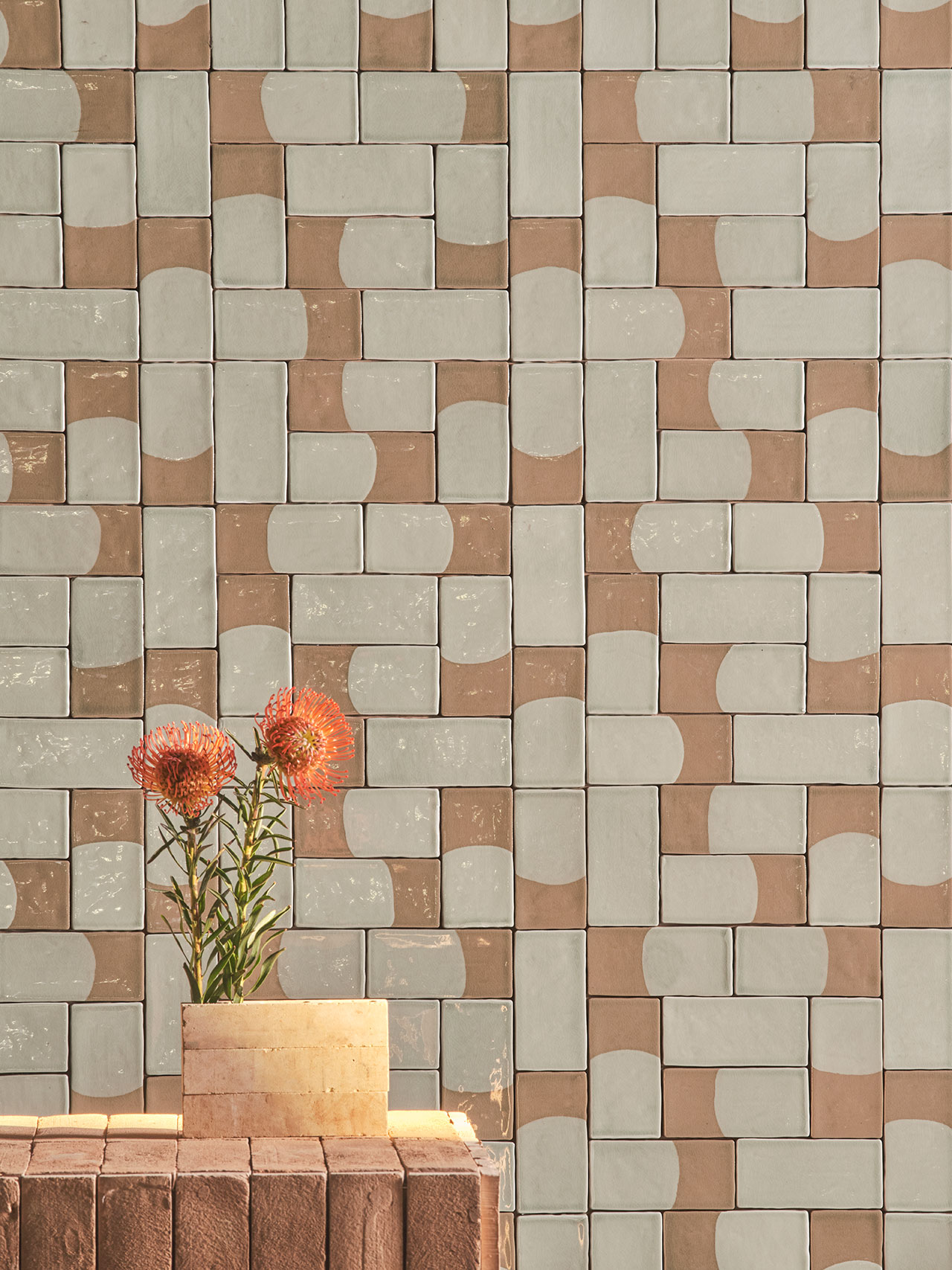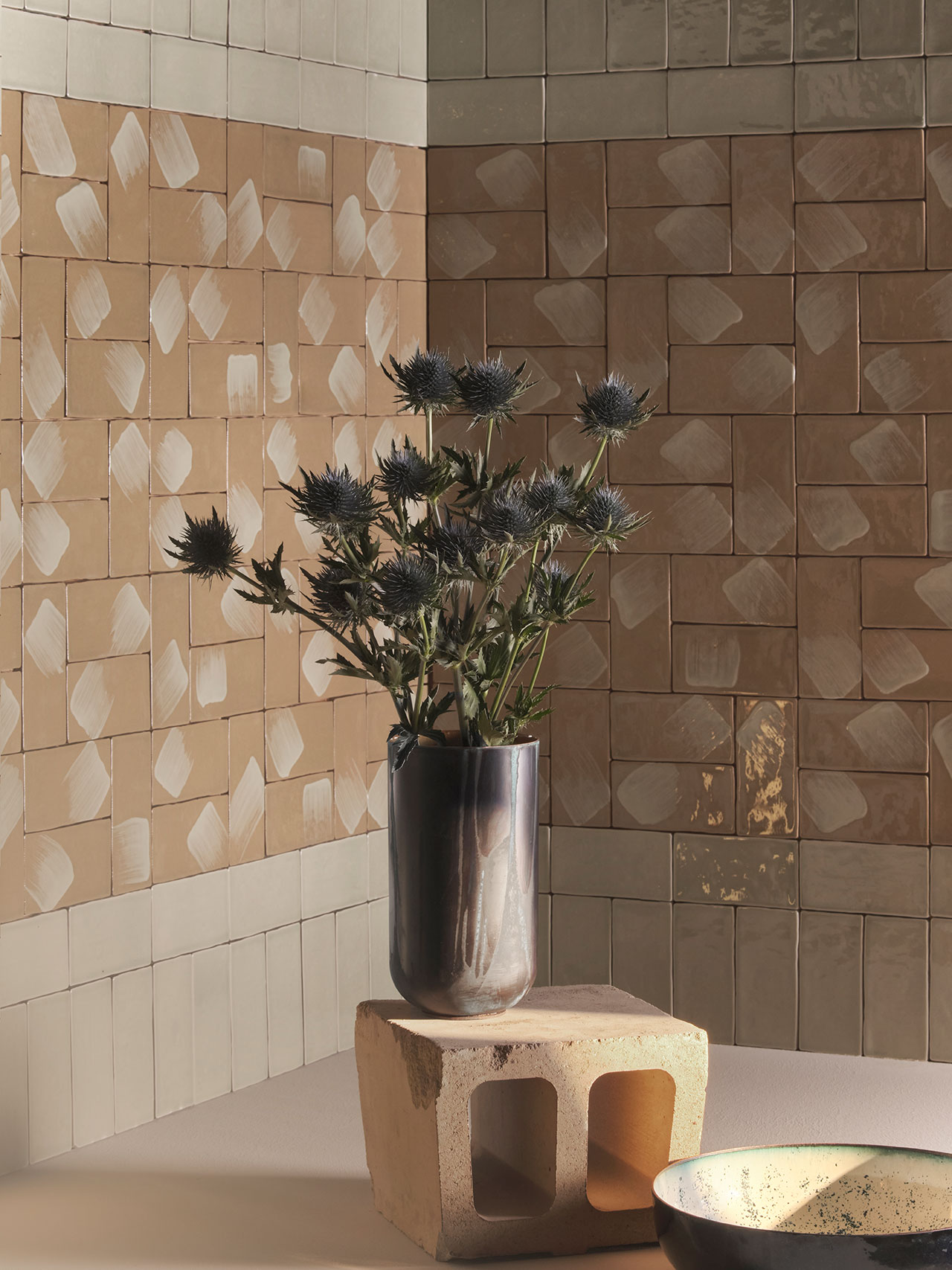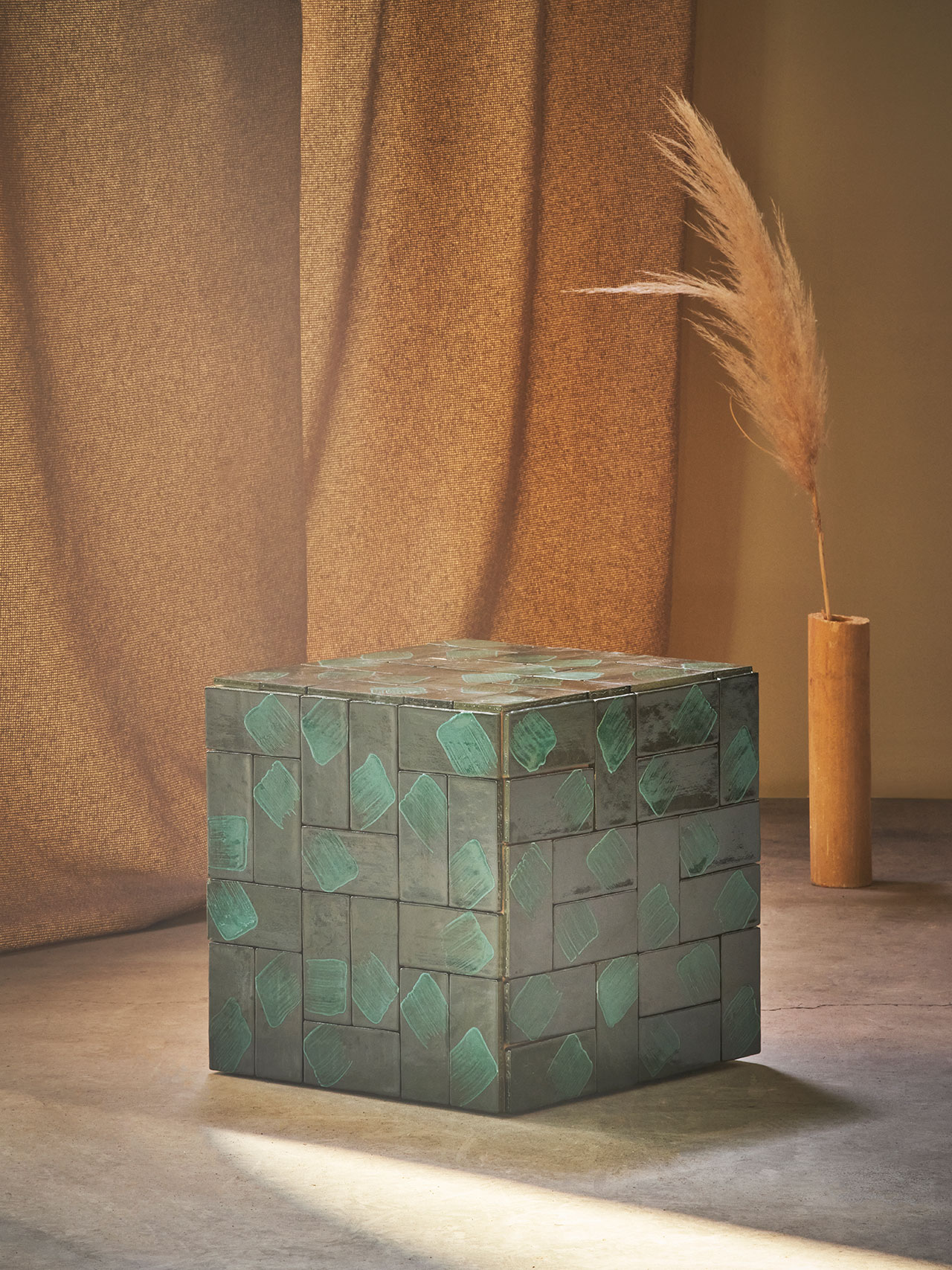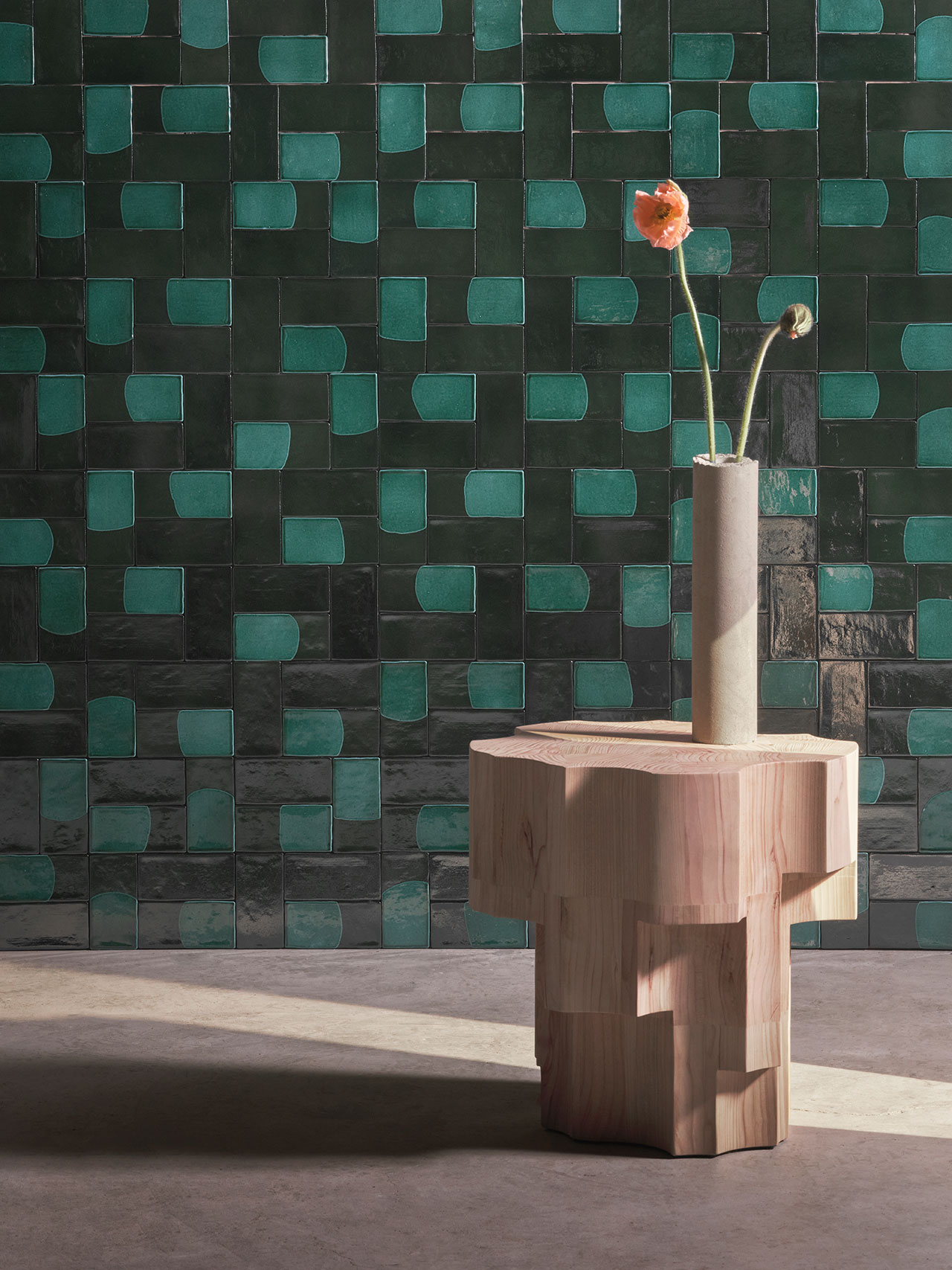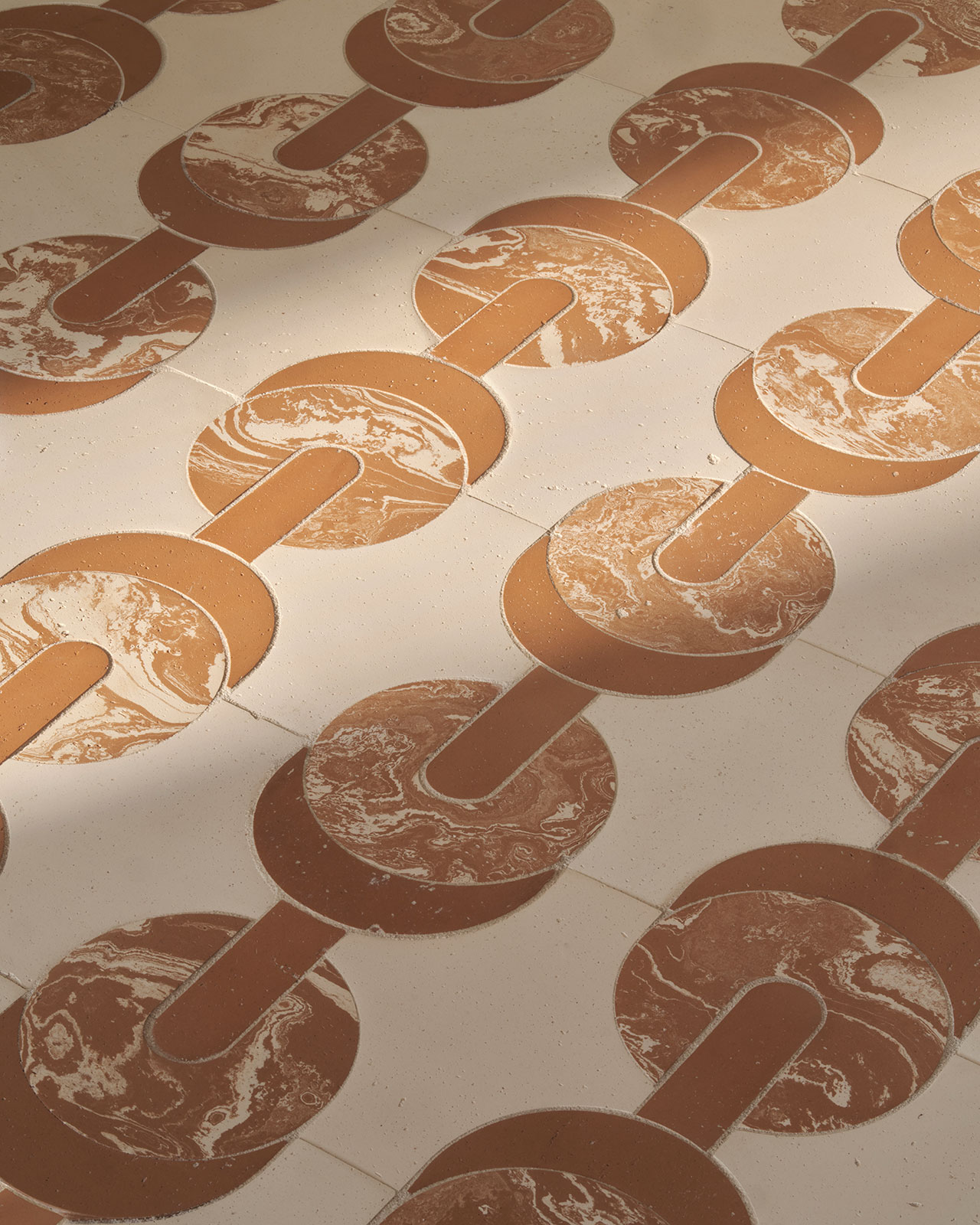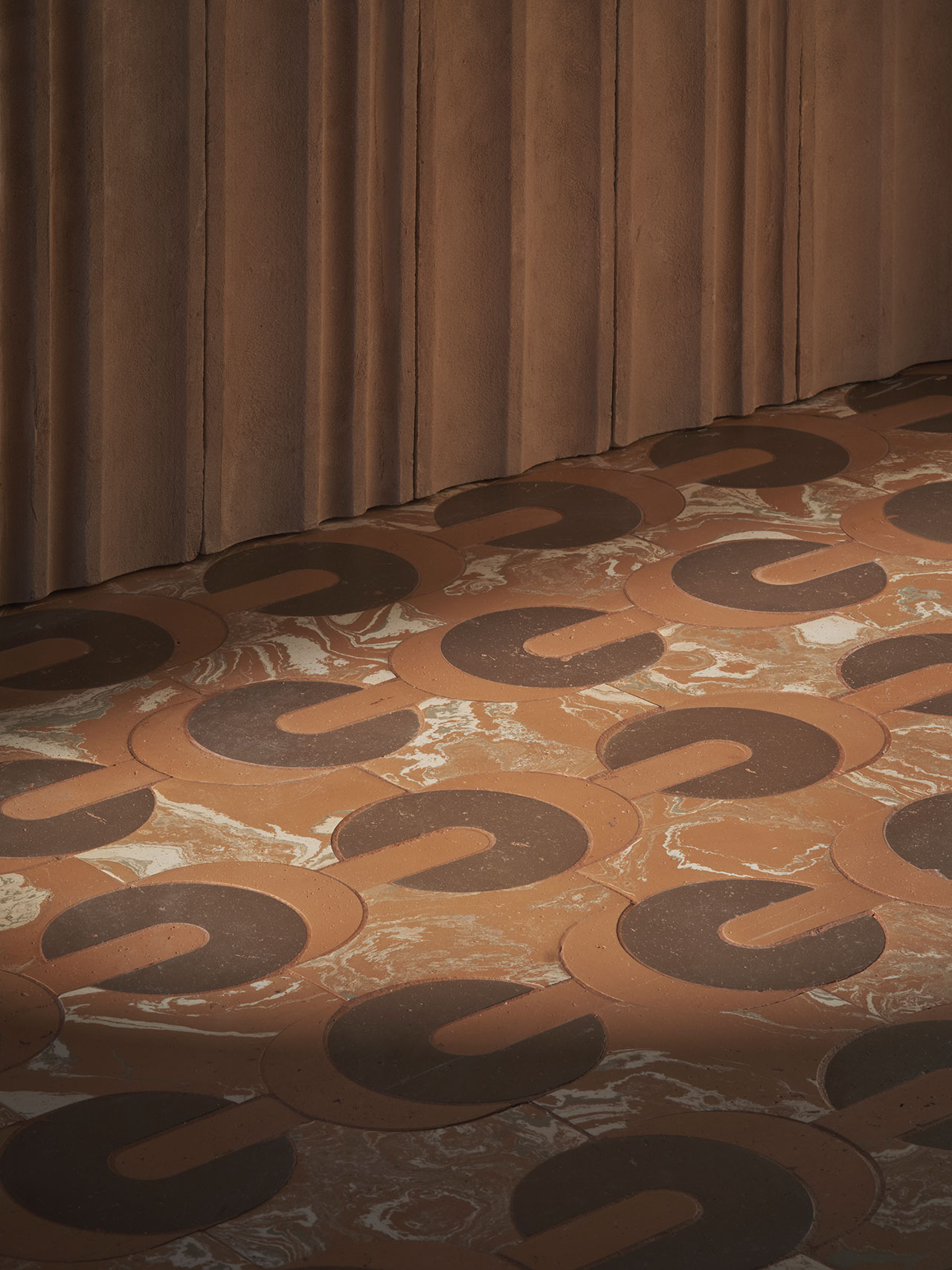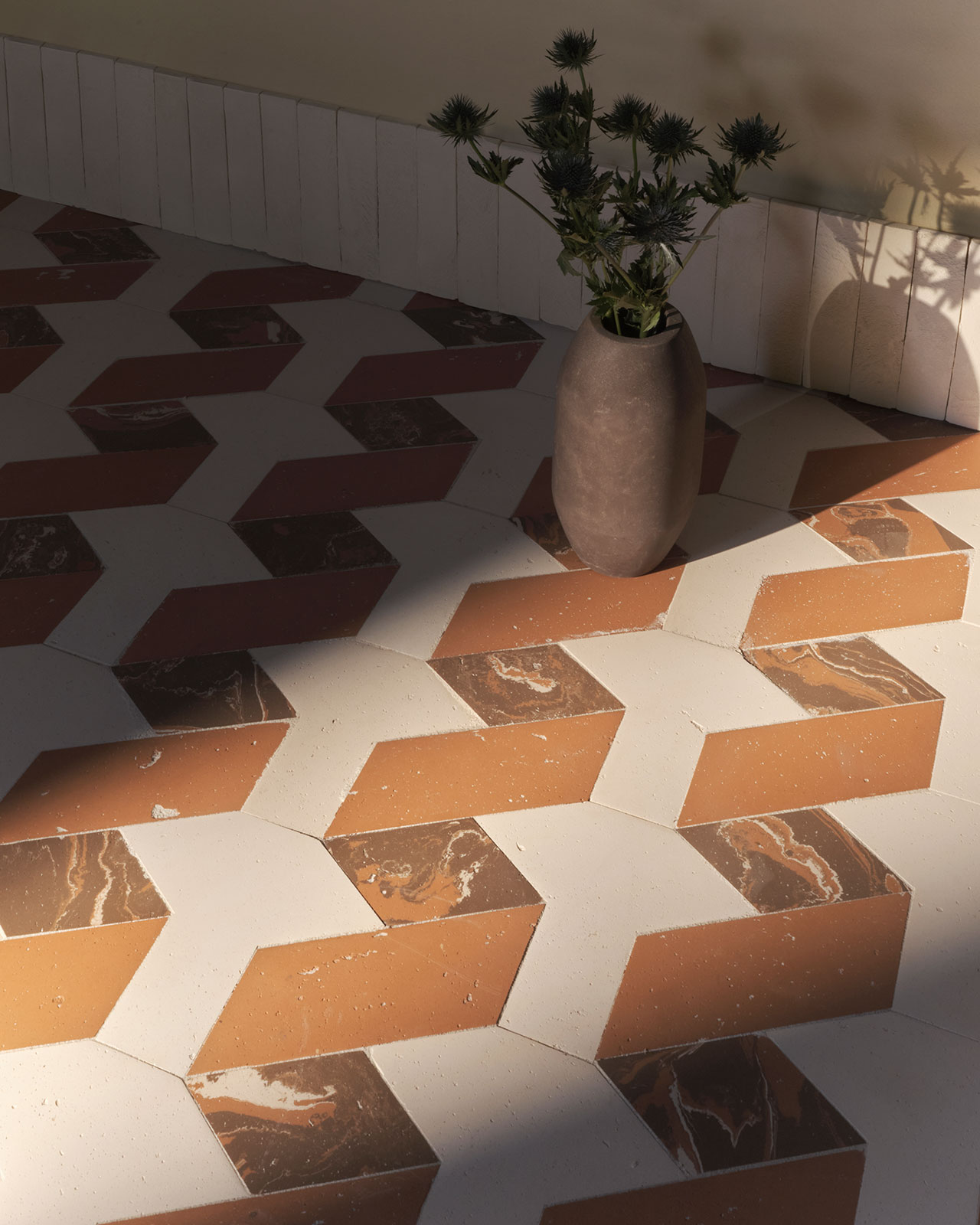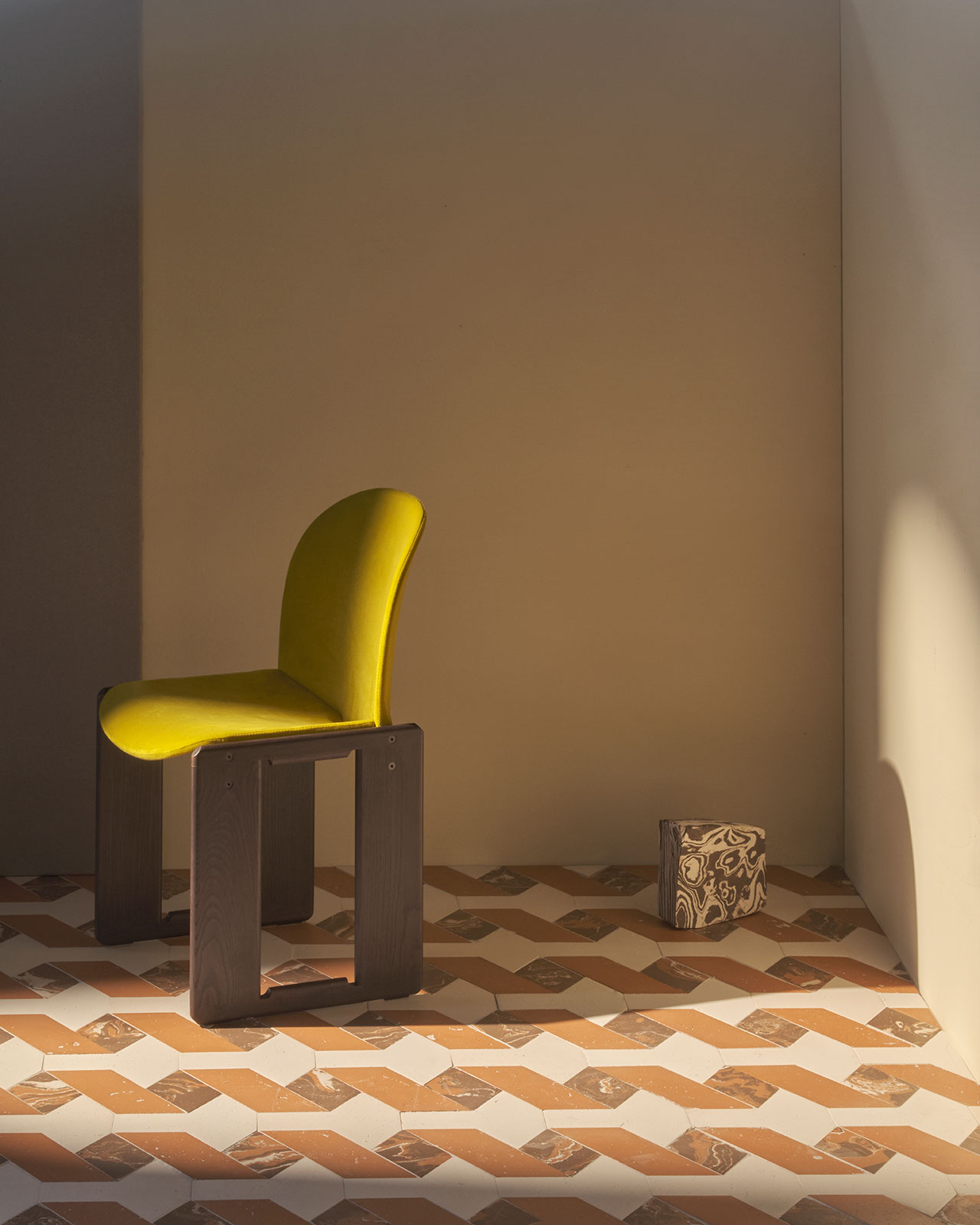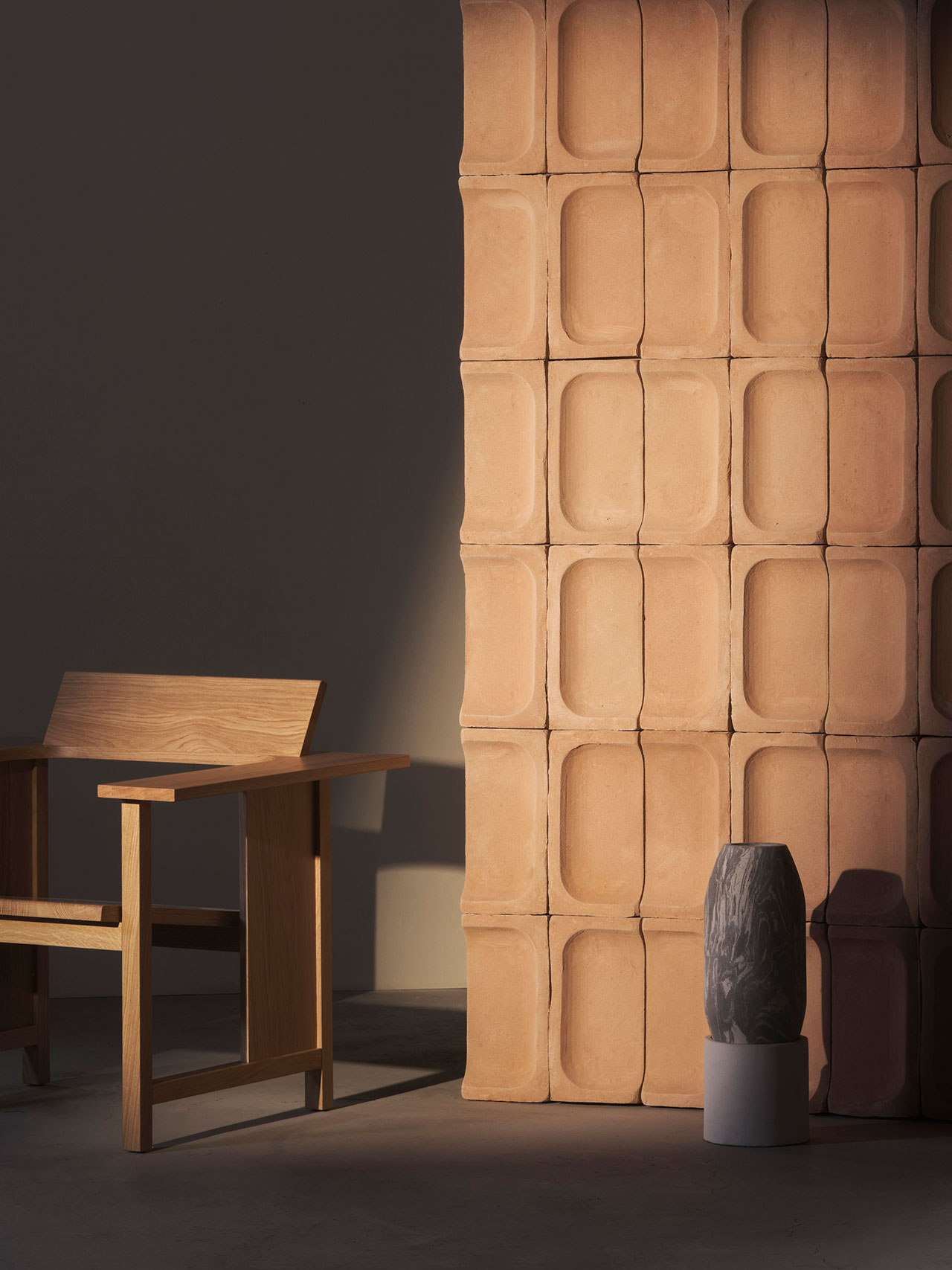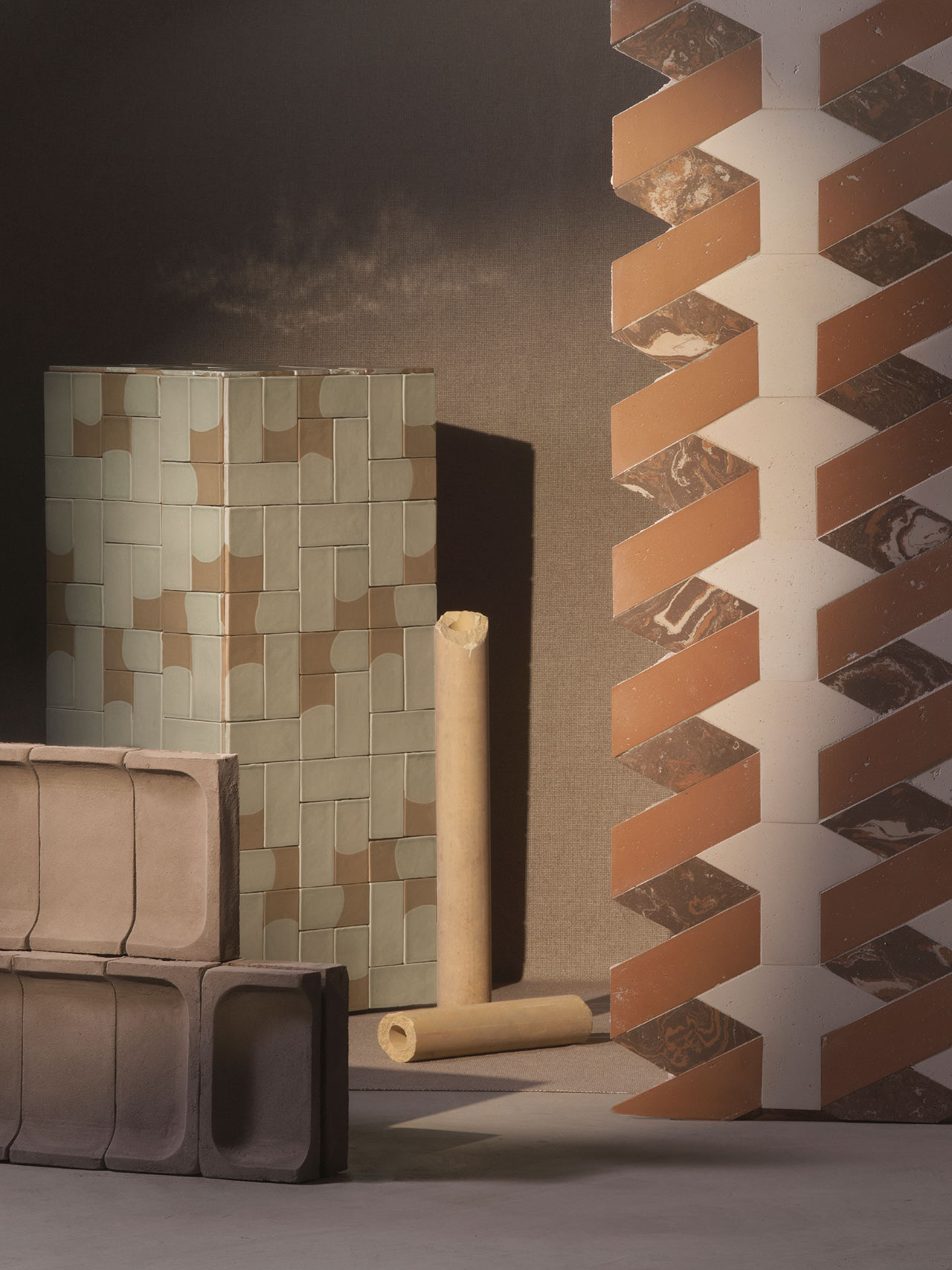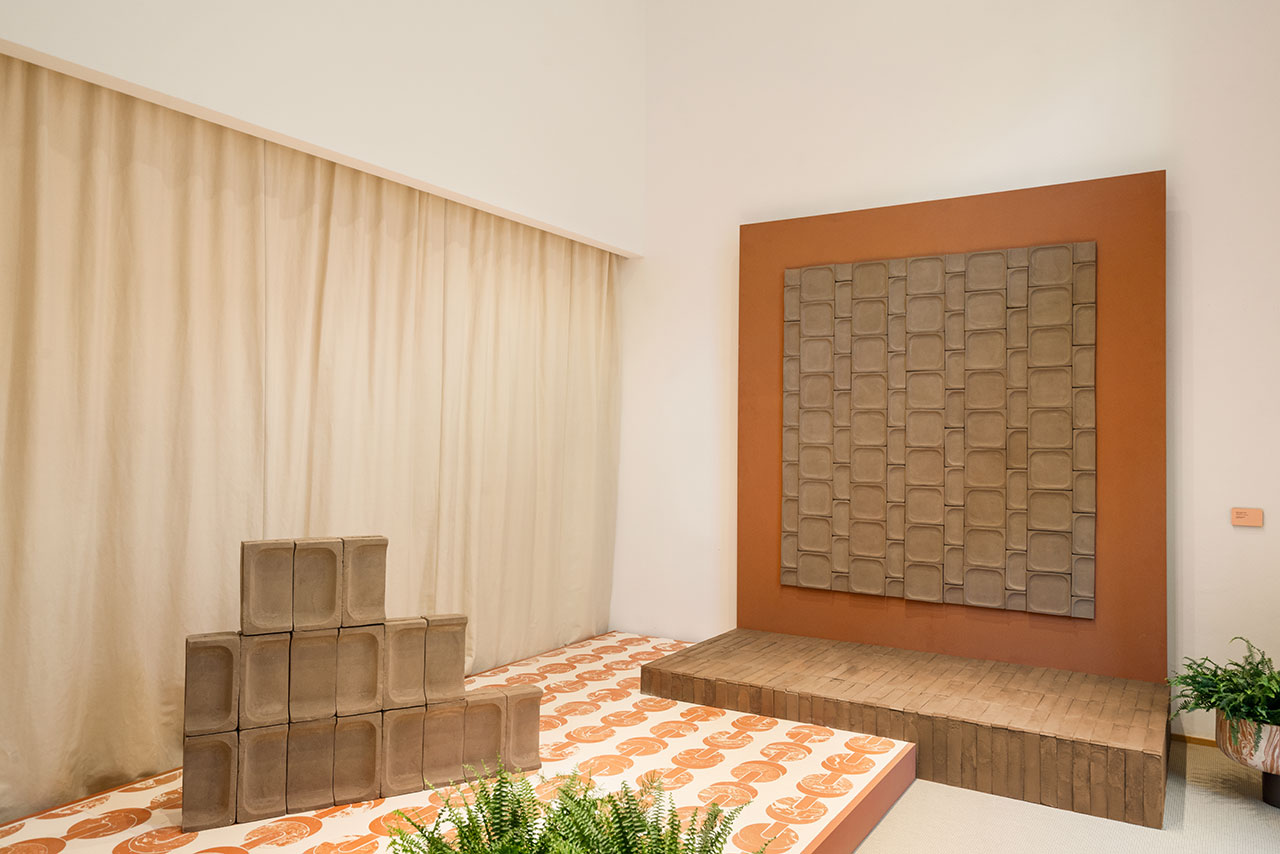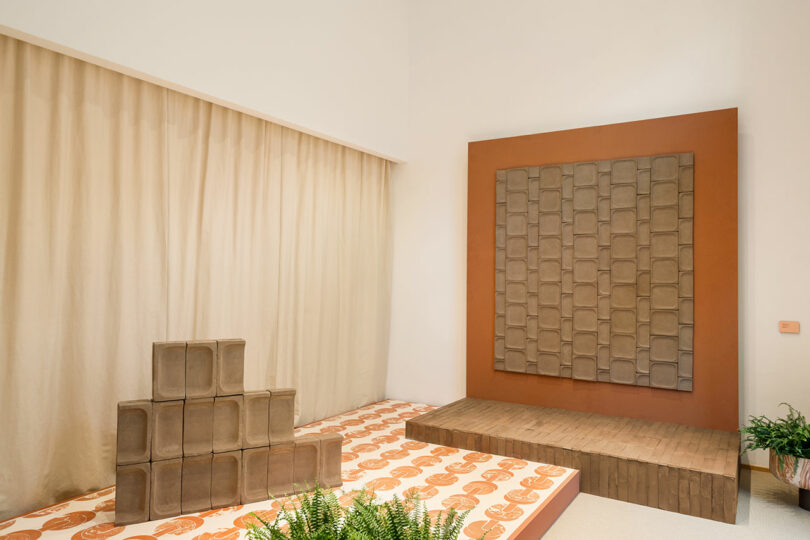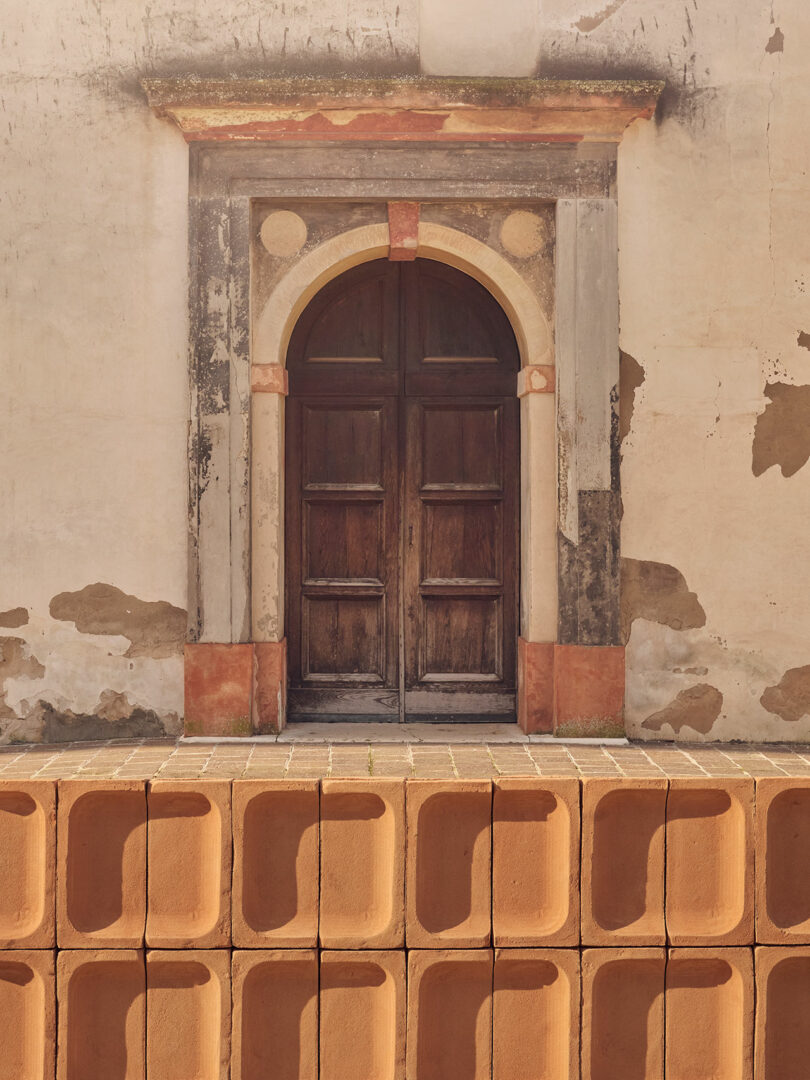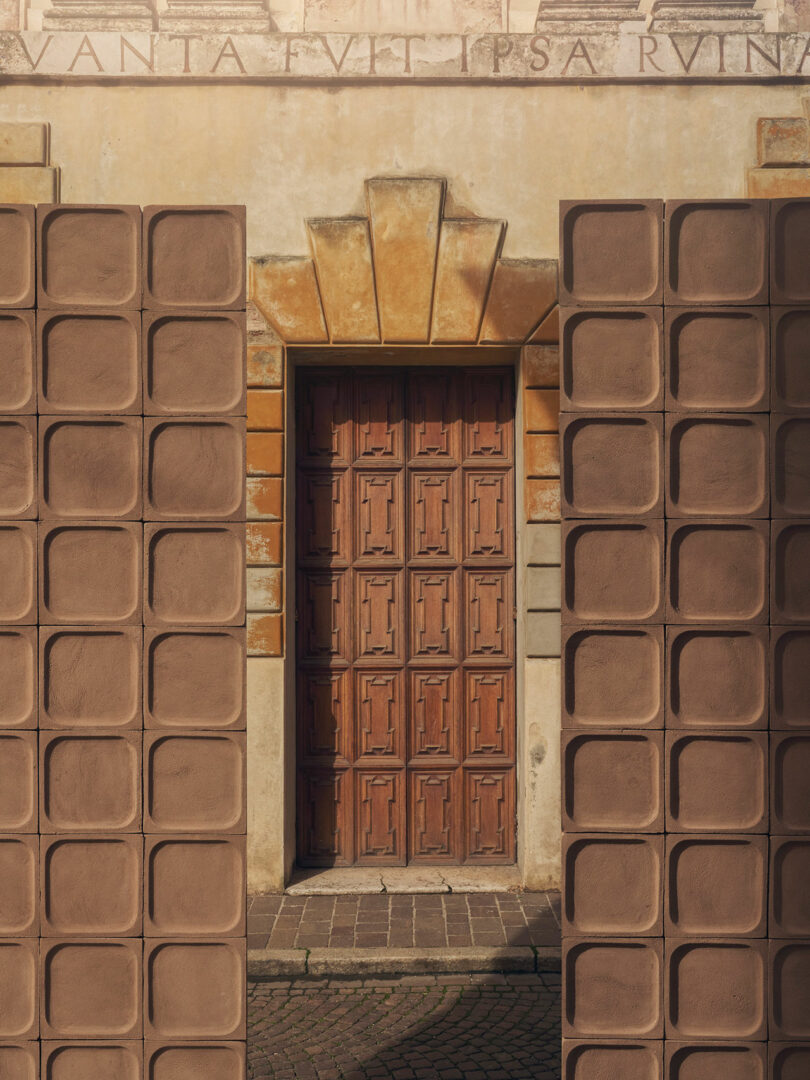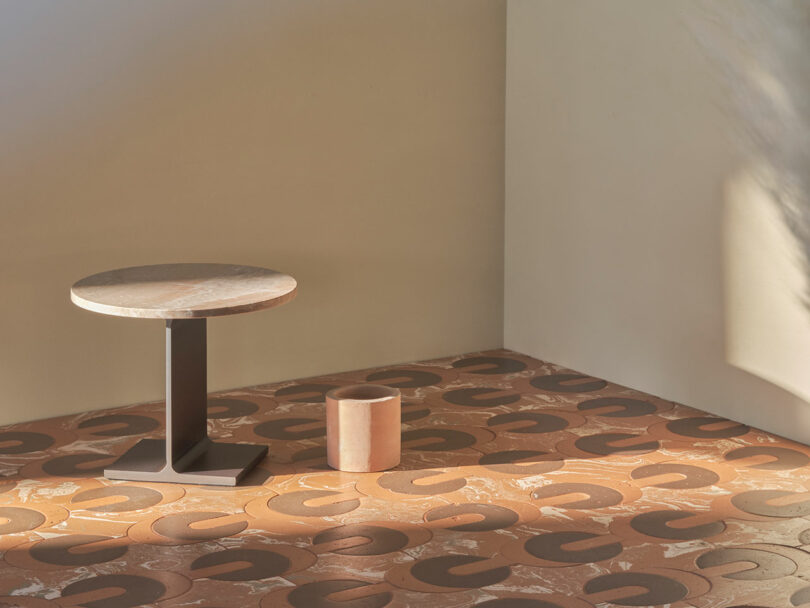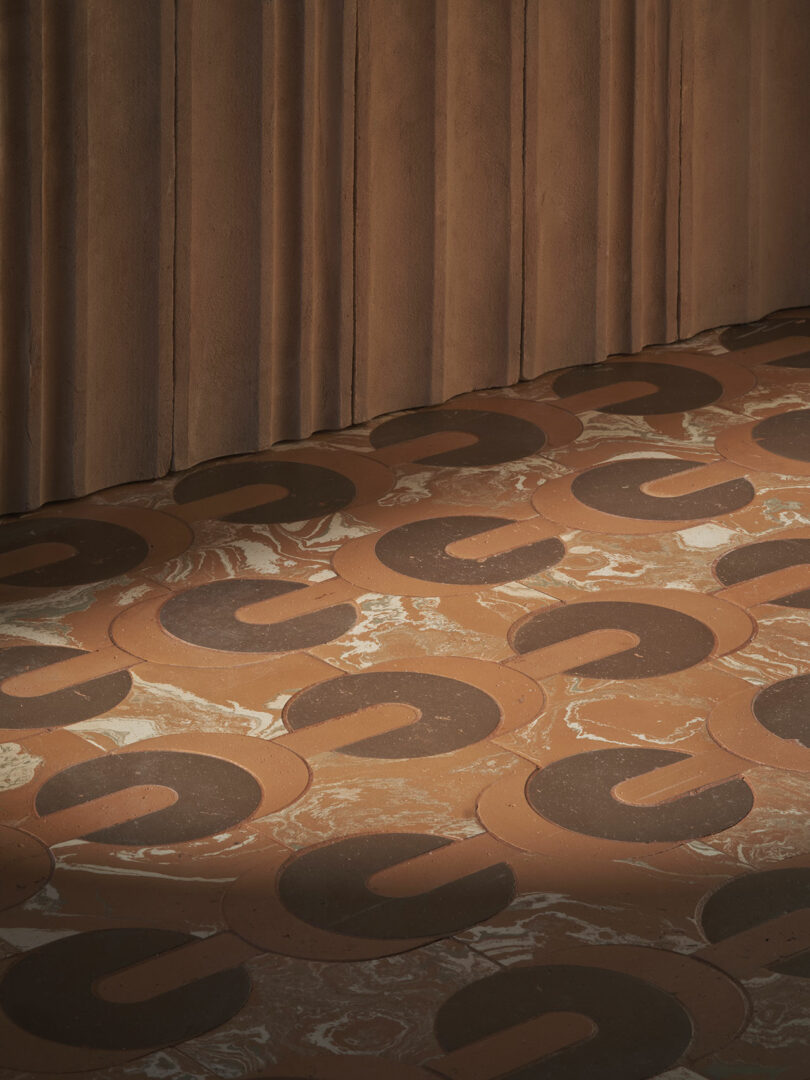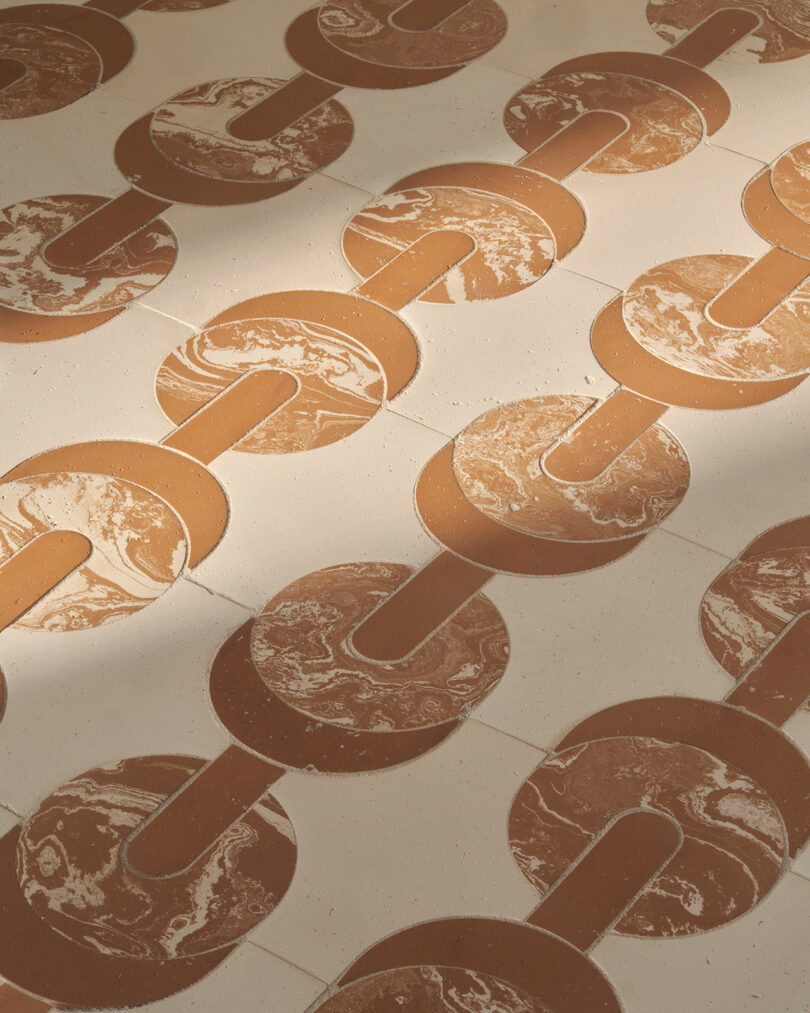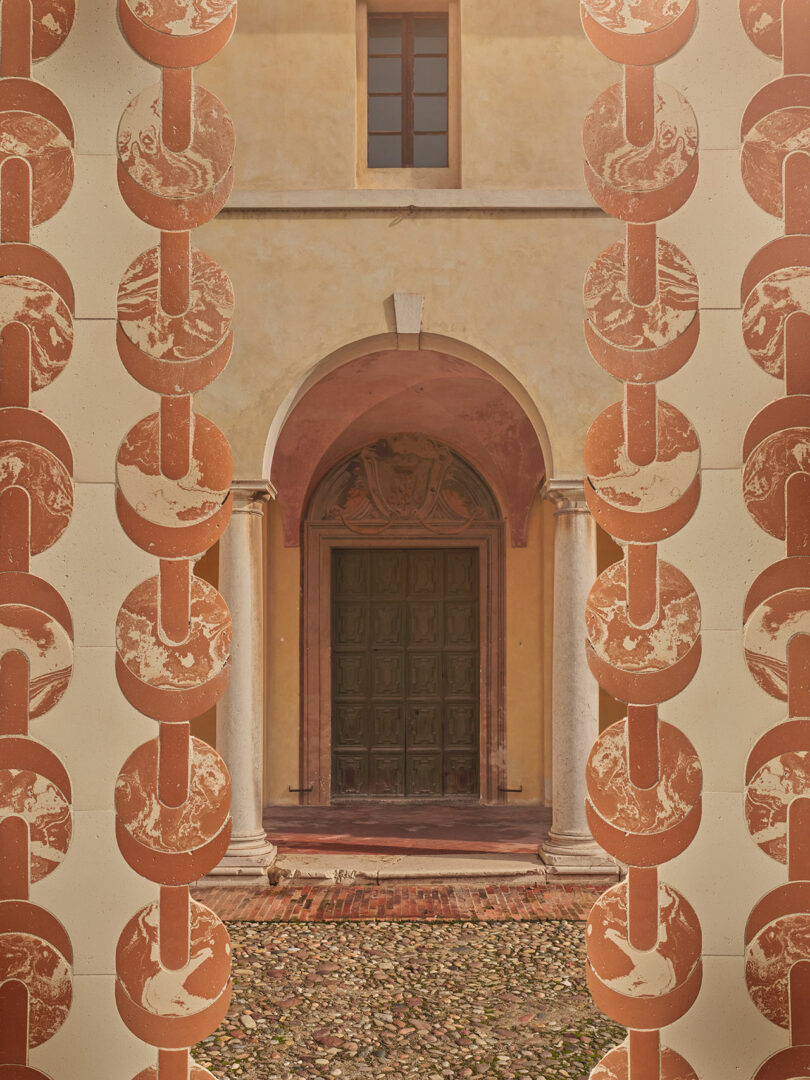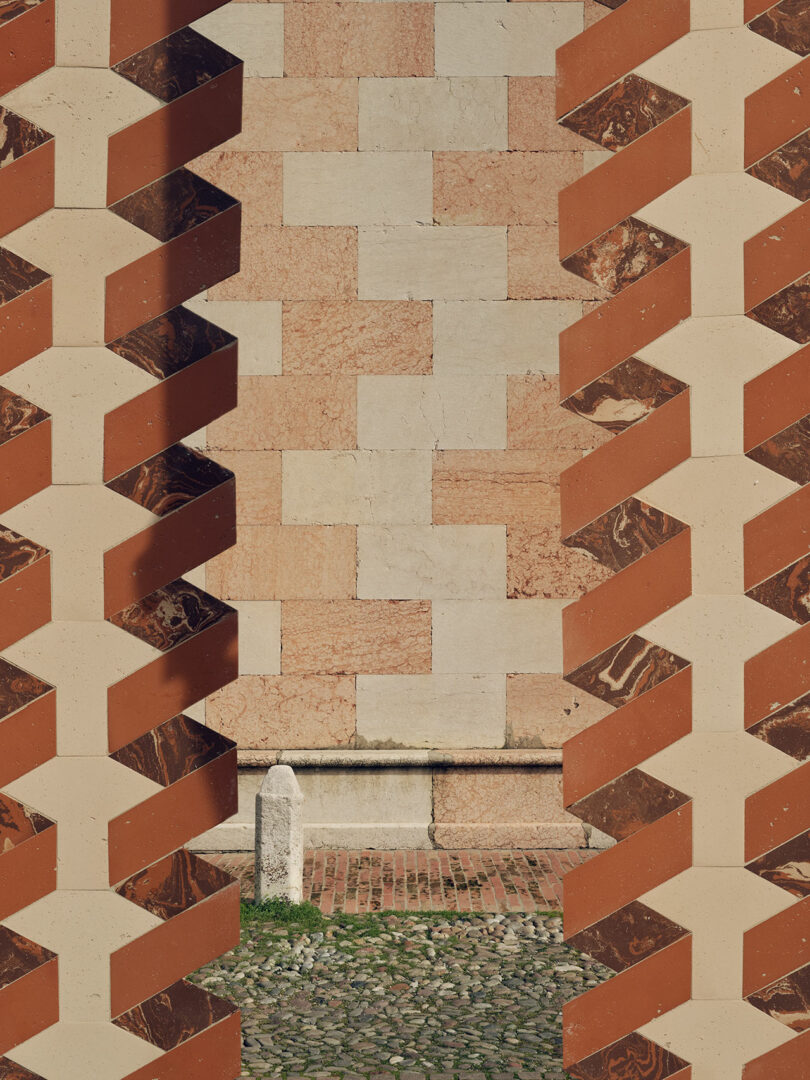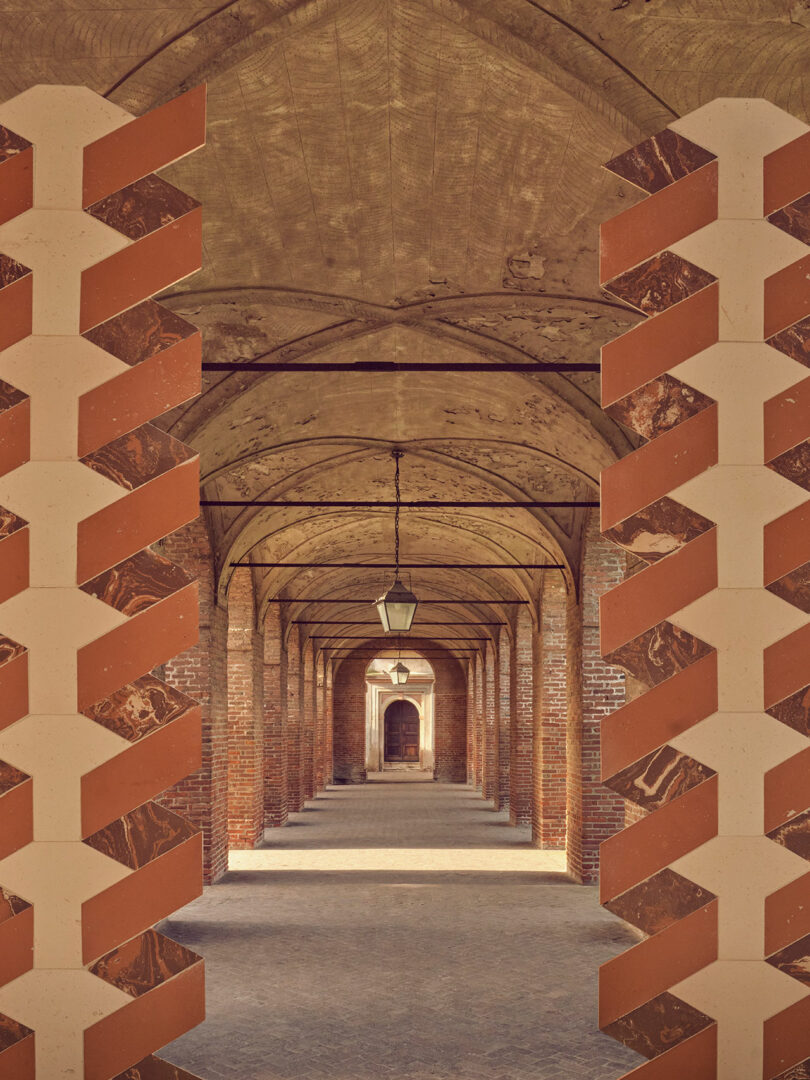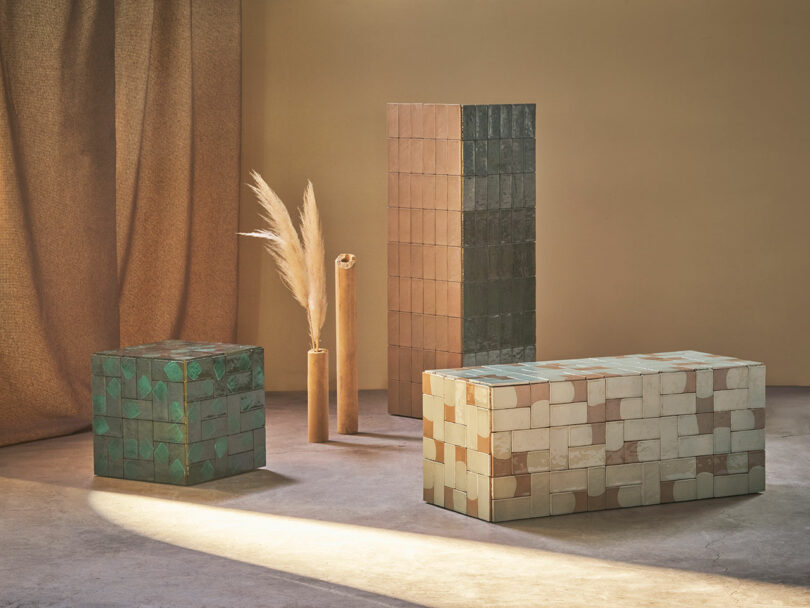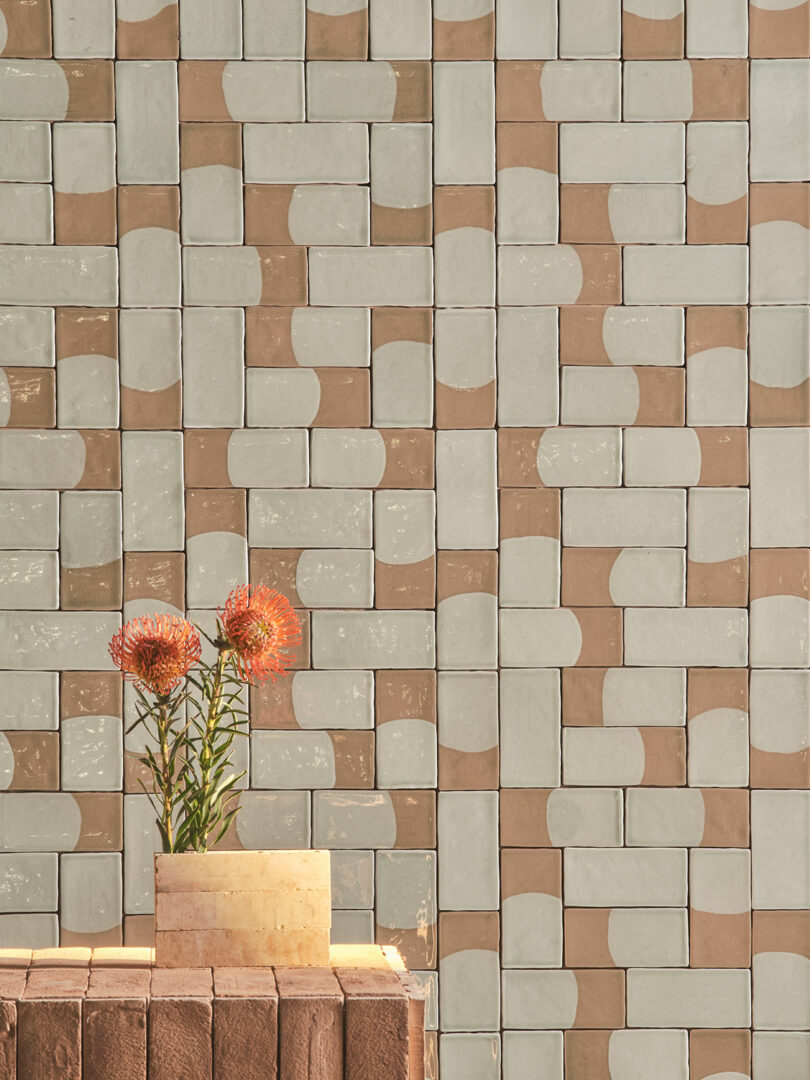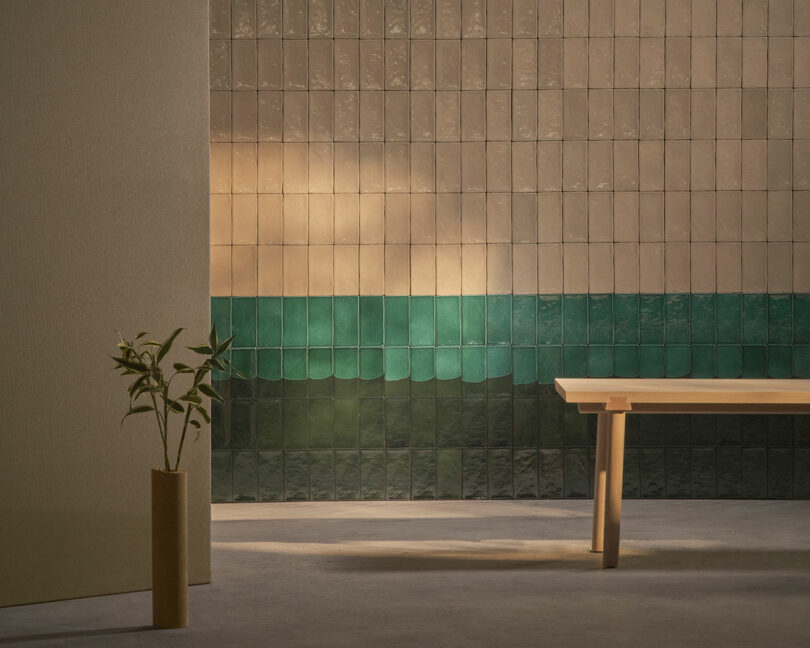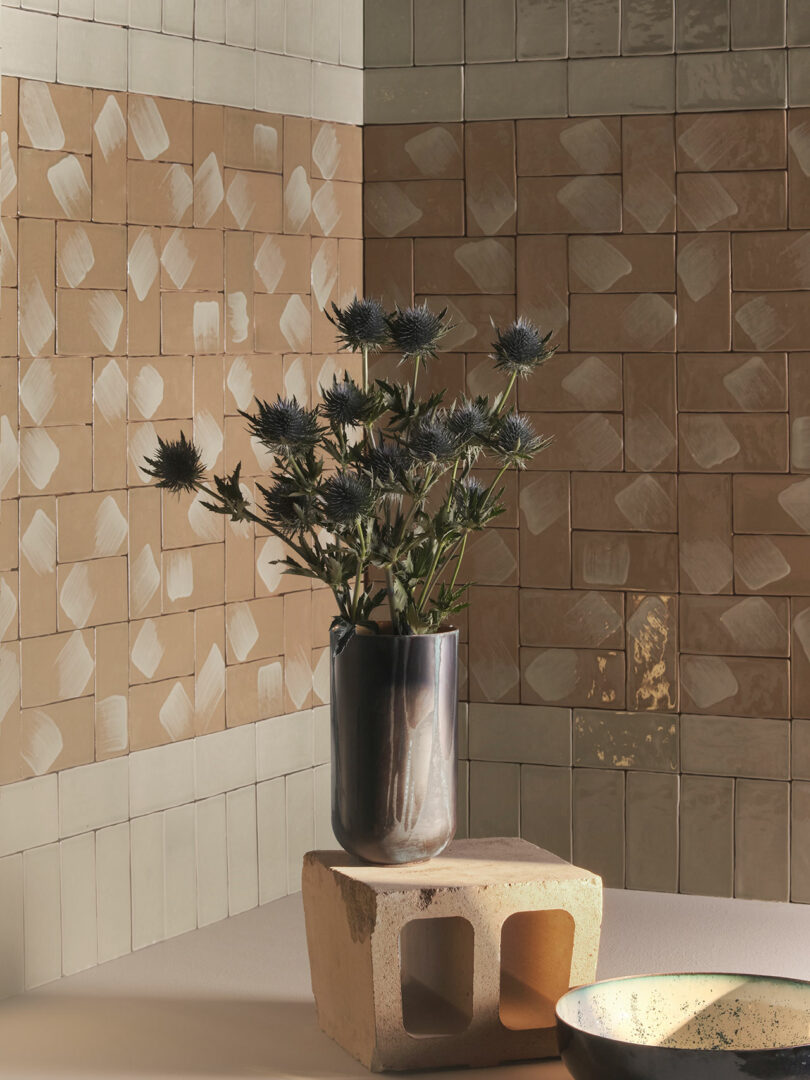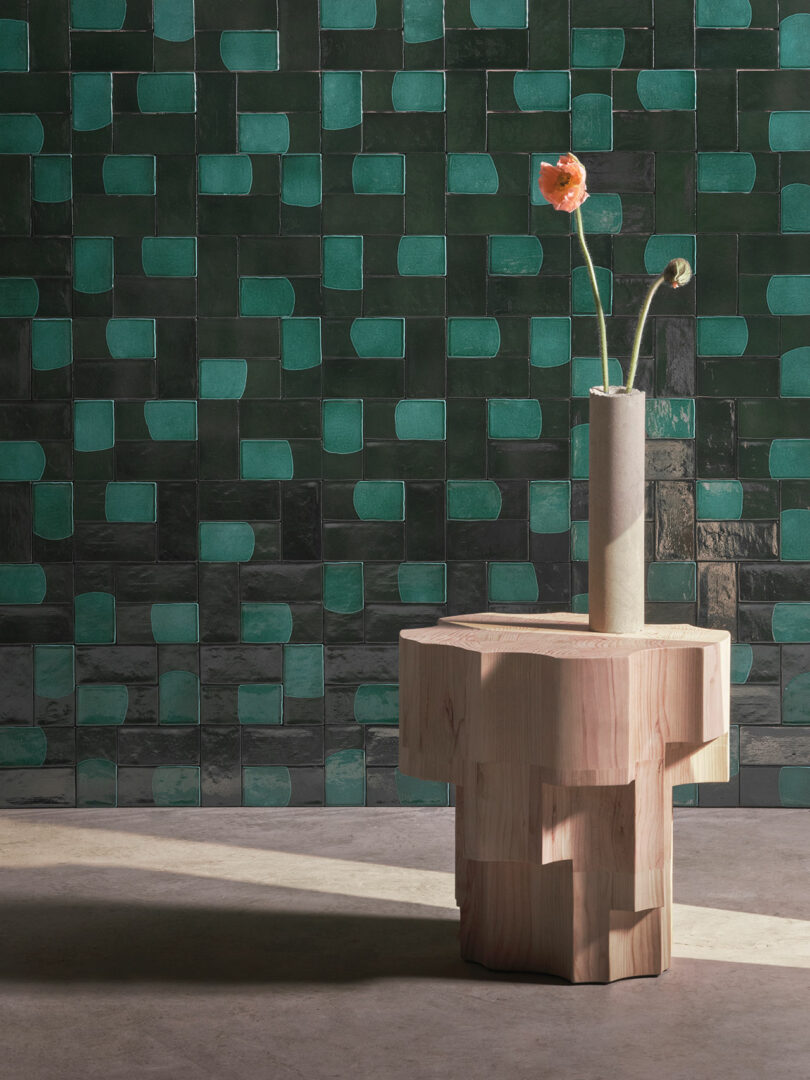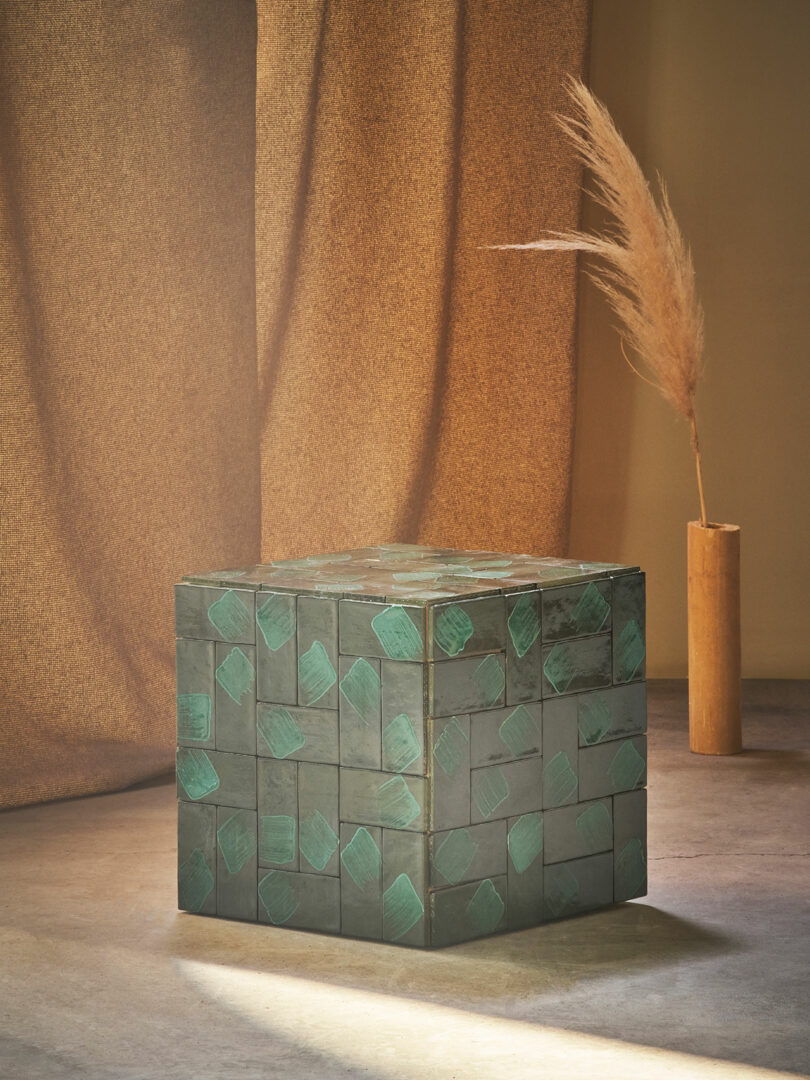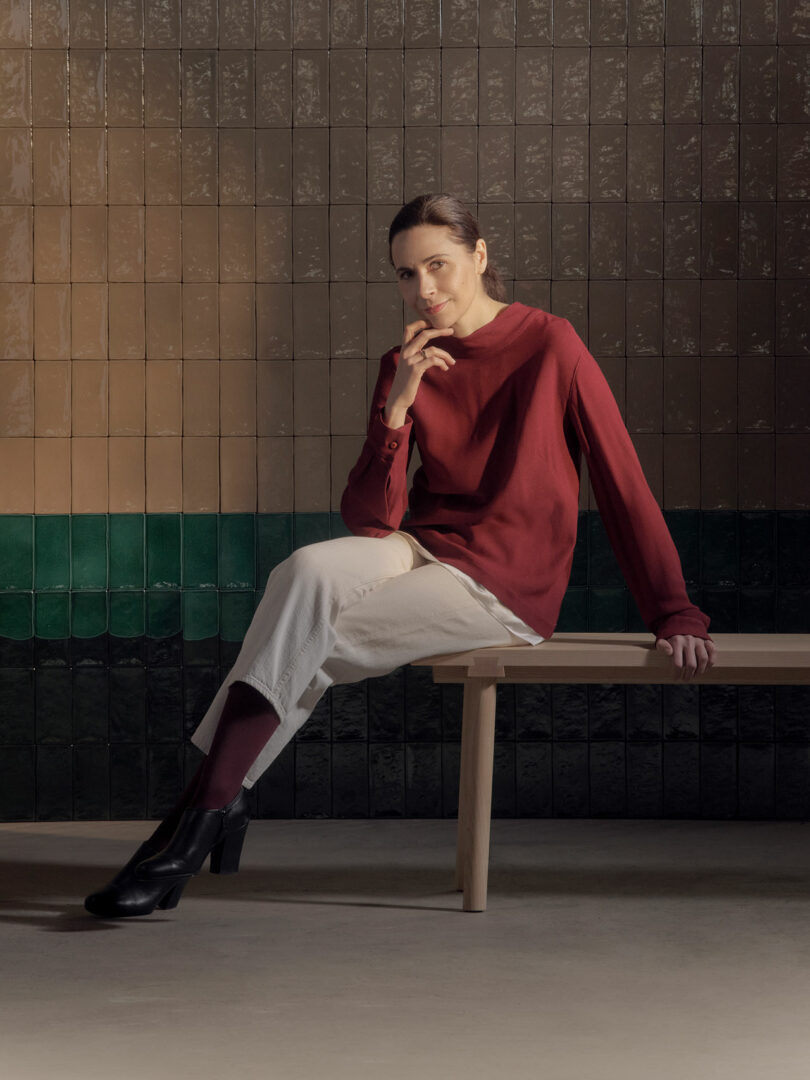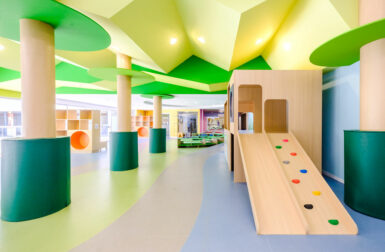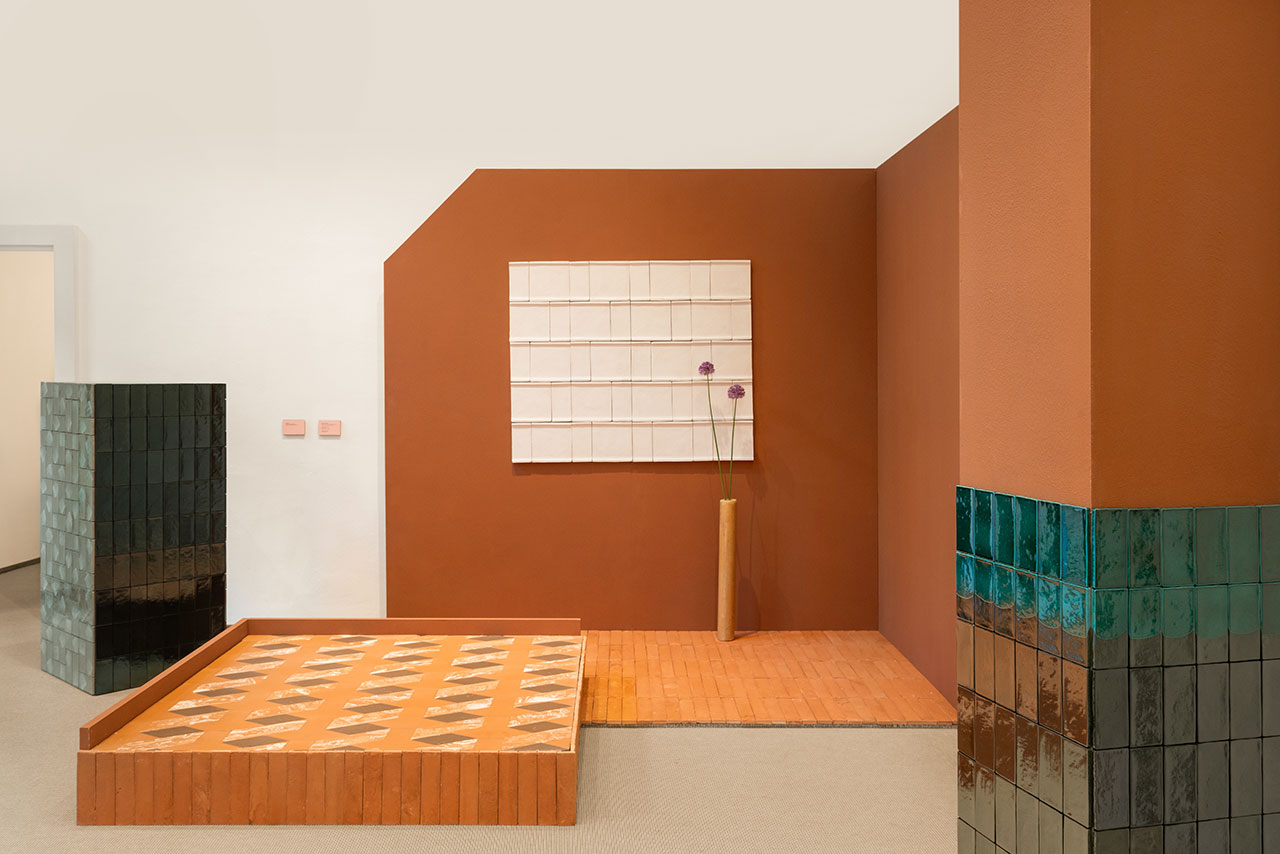
Equal parts surface decoration and protective skin, the art of tile-making dates back as far as civilization itself, distilled through nearly every culture since man’s early twilight with many nations lavished upon its development. Fornace Brioni adds to the annals of earthenware with Grounded, an exhibition showcasing their new wall and floor coverings, designed by Snøhetta and Cristina Celestino, in a terracotta tour arranged by Cristina Celestino Studio. The museum-like approach articulates a poignant material narrative through a series of vignettes grounded in the feeling of home by a juxtaposition of solid-void, absolute geometries, and surfaces awash in warmth.
Forged from Fornace Brioni’s subtle alchemy of water, earth, and fire – the cotto cladding comes from the finest clays slowly accumulated by sedimentation on the Po River’s floodplain. Though the three collections comprising five products debuted during Milan Design Week 2024, the contemporary artisan tiles feel more like decadent artifacts plucked from the ruins of Pompeii and restored to their former splendor. The striking balance between hand-craft, technical precision, and unmistakable Italian aesthetics imbues them with a sense of future nostalgia.
Void Collection designed by Snøhetta
Guided by the tenets of Fornace Brioni, the esteemed global transdisciplinary practice Snøhetta redefines the brand’s boundaries for hand-pressed terracotta with a minimalist design that embraces material reduction, imperfection, and soft form. Rich texture tracks the passage of time in dialogue between light and shadow across each surface. The bilateral symmetry offers a myriad of geometric compositions at any designer’s discretion and is offered in an optional glazing for smooth finish when desired. The deep, sumptuous curves and carvings add additional dimension while maintaining the strength of a structural element.
Araldica Collection designed by Cristina Celestino \\\ Products: Corte + Ducato
Derived from Euclidean geometry, artistic director and designer Cristina Celestino creates a study of points and lines adhering to the precision of congruence and symmetry for the Araldica collection. That rigidness is tempered by chromatic play in the tessellations that unfurl across each surface as satisfying joinery and material contrast create additional dimension. Available in Ducato and Corte, these simplified patterns and variegated terracotta tiles contemporize Cosmati work – a type of mosaic technique practiced by 12th and 13th century Roman architects – for harmonic synthesis and incredible illusion.
Fluviale Collection designed by Cristina Celestino \\\ Products: Alveo, Plain, + Golena
Celestino takes a different approach for Fluviale, with its offerings Alveo, Plain, and Golena. Like serif typefaces capturing the physicality of carving glyphs into stone, so too does this collection echo human motion – here embodying brushstrokes. Striking a balance between similarity and subtle difference, each tile becomes a gesture for a greater body of movement. The variations take inspiration from the plant world beneath rippling waters, flora along riverbanks, and earth whipped into shape by the tides. Embrace entropy or intervene for compositions that range from organic to accurate.
To learn more about their heritage of tile, visit fornacebrioni.it.
Photography by Mattia Balsamini and Piercarlo Quecchia as noted.
